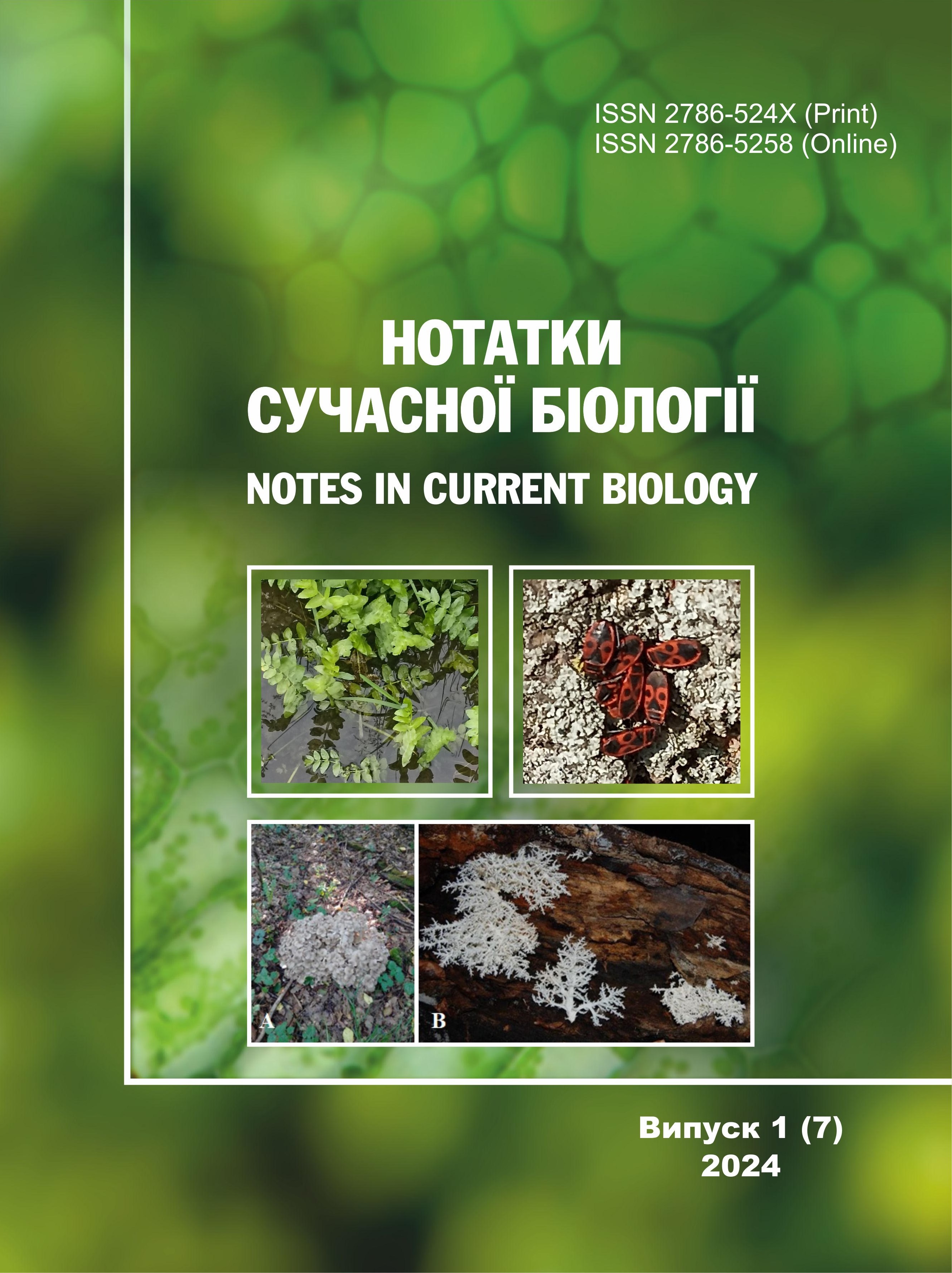Coagulogram indicators in patients with post-covid syndrome
DOI:
https://doi.org/10.29038/NCBio.24.1-11Keywords:
COVID-19, biomarkers, coagulogram indicators, post-covid syndrome.Abstract
Coagulogram indicators were studied in patients with post-covid syndrome aged 24 to 80 years of both sexes, with different vaccination status against coronavirus infection. Determination of coagulogram parameters in patients with post-covid syndrome is an integral part of the examination of these patients. The coagulogram includes a number of indicators, such as blood clotting time, the level of fibrinogen, platelets and other factors that determine the blood coagulation system.
It was determined that the indicators of the hemostasis system (APTT, PT, D-dimer, fibrinogen) exceed the permissible values, which indicates a significant impact of the post-covid syndrome on this system. An increase in these indicators may indicate the activation of the blood coagulation system, which may be associated with the risk of thrombosis or inflammatory processes.
The levels of biological markers in vaccinated and unvaccinated patients vary in different ranges. However, D-dimer levels in vaccinated patients are slightly lower than in unvaccinated patients. This suggests that vaccination probably alleviates the course of the disease.
The results of the study provide important information for diagnosing the state of hemostasis and determining the risk of thrombotic complications in patients with post-covid syndrome. Consideration of elevated levels of C-reactive protein and coagulogram indicators can serve as important markers for clinicians when making decisions about treatment and monitoring of patients.
References
Nguyen, N. N.; Nguyen, Y.N.; Hoang, V. T.; Million, M.; Gautret, P. SARS-CoV-2 Reinfection and Severity of the Disease: A Systematic Review and Meta-Analysis. Viruses 2023, 15, p. 967.
Chen, C.; Haupert, S. R.; Zimmermann, L.; Shi, X.; Fritsche, L. G.; Mukherjee, B. Global Prevalence of Post-Coronavirus Disease 2019 (COVID-19) Condition or Long COVID: A Meta-Analysis and Systematic Review. J. Infect. Dis. 2022, 226, pp. 1593–1607.
Girelli D, Marchi G, Busti F, Vianello A. Iron metabolism in infections: Focus on COVID-19. Semin Hematol. 2021. 58(3), pp. 182-187.
HumaClot Duoplus. User manual.
Fernández-de-las-Peñas C. Palacios-Ceña D. Gómez-Mayordomo V. et al. Prevalence of post-COVID-19 symptoms in hospitalized and non-hospitalized COVID-19 survivors: a systematic review and meta-analysis. Eur J Intern Med. 2021; 92. P. 55.
Groff D. Sun A. Ssentongo A.E. et al. Short-term and long-term rates of postacute sequelae of SARS-CoV-2 infection: a systematic review. JAMA Netw Open. 2021; 4e2128568.
Long Q, Li J, Hu X, Bai Y, Zheng Y, Gao Z. Follow-Ups on Persistent Symptoms and Pulmonary Function Among Post-Acute COVID-19 Patients: A Systematic Review and Meta-Analysis. Front Med (Lausanne). 2021 3;8:702635.
Michelen M, Manoharan L, Elkheir N, Cheng V, Dagens A, Hastie C, O'Hara M, Suett J, Dahmash D, Bugaeva P, Rigby I, Munblit D, Harriss E, Burls A, Foote C, Scott J, Carson G, Olliaro P, Sigfrid L, Stavropoulou C. Characterising long COVID: a living systematic review. BMJ Glob Health. 2021 Sep;6(9):e005427.
Cabrera Martimbianco A. L., Pacheco R. L., Bagattini Â. M., Riera R. Frequency, signs and symptoms, and criteria adopted for long COVID-19: A systematic review. Int J Clin Pract. 2021 Oct;75(10):e14357.
Ahamed, J., Laurence, J. Long COVID endotheliopathy: Hypothesized mechanisms and potential therapeutic approaches. J. Clin. Investig. 2022, 132, 2133.
Dalamaga, M.; Karmaniolas, K.; Nikolaidou, A.; Papadavid, E. Hypocalcemia, hypomagnesemia, and hypokalemia following hydrofluoric acid chemical injury. J. Burn Care Res. Off. Publ. Am. Burn Assoc. 2008, 29, pp. 541–543.
Karampela, I., Christodoulatos, G. S., Vallianou, N., Tsilingiris, D., Chrysanthopoulou, E., Skyllas, G., Antonakos, G., Marinou, I., Vogiatzakis, E., Armaganidis, A., et al. Circulating Chemerin and Its Kinetics May Be a Useful Diagnostic and Prognostic Biomarker in Critically Ill Patients with Sepsis: A Prospective Study. Biomolecules. 2022, 12, p. 301.
Boer E., Petrache I., Goldstein N. M., Olin J. T., Keith R. C., Modena B., Mohning M. P., Yunt Z. X., San-Millán I., Swigris J. J. Decreased Fatty Acid Oxidation and Altered Lactate Production during Exercise in Patients with Post-acute COVID-19 Syndrome. Am J Respir Crit Care Med. 2022 Jan 1; 205 (1). pp. 126-129.
Houben-Wilke, S., Goërtz, Y. M., Delbressine, J. M., Vaes, A. W., Meys, R., Machado, F. V., van Herck, M., Burtin, C., Posthuma, R., Franssen, F.M., et al. The Impact of Long COVID-19 on Mental Health: Observational 6-Month Follow-Up Study. JMIR Ment. Health. 2022, 9, pp. 33704.
Roca-Fernandez, A., Wamil, M., Telford, A., Carapella, V., Borlotti, A., Monteiro, D., Thomaides-Brears, H., Kelly, M., Dennis, A., Banerjee, R., et al. Cardiac abnormalities in Long COVID 1-year post-SARS-CoV-2 infection. Open Heart. 2023, 10, pp. 002241.
Terpos, E., Ntanasis-Stathopoulos, I., Elalamy, I., Kastritis, E., Sergentanis, T. N., Politou, M., Psaltopoulou, T., Gerotziafas, G., Dimopoulos, M. A. Hematological findings and complications of COVID-19. Am. J. Hematol. 2020, 95, pp. 834–847.
Castanares-Zapatero, D.; Chalon, P.; Kohn, L.; Dauvrin, M.; Detollenaere, J.; Maertens de Noordhout, C.; Primus-de Jong, C.; Cleemput, I.; Van den Heede, K. Pathophysiology and mechanism of long COVID: A comprehensive review. Ann. Med. 2022, 54, pp. 1473–1487.
Liakh,Yu.Ye., Hur’ianov,V.H., Hrytsai,O. S. Komp’iuterna tekhnika ta metody matematychnoi statystyky.Naukovo-dokazova praktychna diialnist u fizychnii terapii: metodrek. dlia samostiinoi pidhotovky do prakt. zaniat. Lutsk: Vezha-Druk, 2017. 97 s.
Helms, J., Tacquard, C., Severac, F., Leonard-Lorant, I., Ohana, M., Delabranche, X., Merdji, H., Clere-Jehl, R., Schenck, M., Fagot Gandet, F., et al. High risk of thrombosis in patients with severe SARS-CoV-2 infection: A multicenter prospective cohort study. Intensive Care Med. 2020, 46, pp. 1089–1098.
Kotecha, T., Knight, D. S., Razvi, Y., Kumar, K., Vimalesvaran, K., Thornton, G., Patel, R., Chacko, L., Brown, J. T., Coyle, C., et al. Patterns of myocardial injury in recovered troponin-positive COVID-19 patients assessed by cardiovascular magnetic resonance. Eur. Heart J. 2021, 42, pp. 1866–1878.
Downloads
Published
Issue
Section
License
Copyright (c) 2024 Дмитро Давиденко, Тетяна Галапчук, Олександр Мотузюк, Оксана Усова

This work is licensed under a Creative Commons Attribution-NonCommercial 4.0 International License.





